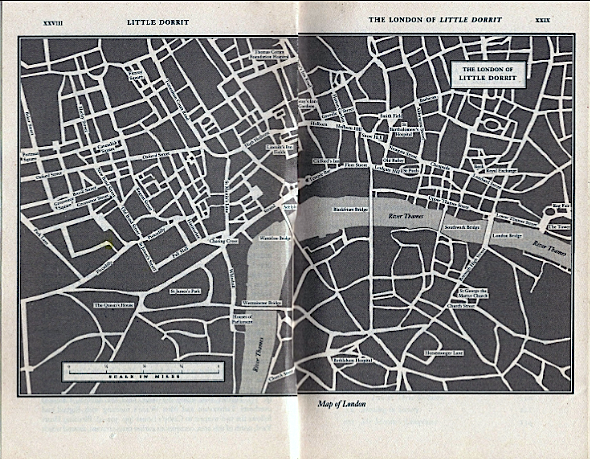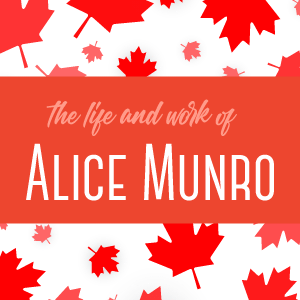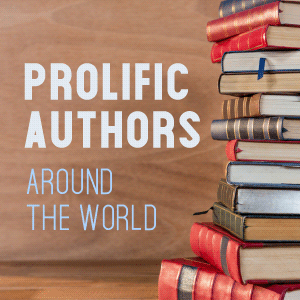A Little Dorrit Analysis, or Why We Love Charles Dickens

Getting into Dickens
When was the last time you read Charles Dickens?
Until a few months ago, I hadn’t read any of his work since we were forced to read Great Expectations in the seventh grade. Unlike most of my classmates, I mostly liked Great Expectations—but apparently not enough to give Dickens another go any time in the last decade. For no real reason, Dickens has always been one of those Authors I Should Read and never one I did. It’s also telling that the only factoid about Dickens that has ever really stuck in my mind is that he was paid by the word (the lazy seventh grader’s sound logic for not finishing the book, I guess—and also not true).
Recently, though, Dickens started popping up everywhere around me. Several friends had been recommending him to me for a while, and I then did a lot of research about Dickens’ life and work for our holiday post on A Christmas Carol. When I found A Tale of Two Cities on sale, it seemed like the right time to try Dickens again.
And what happened? I finished A Tale of Two Cities in about three days, loved it, and immediately ran back to the bookstore to get another Dickens novel. I stumbled upon Little Dorrit for about $2. Not the same story, but the same story for me; I couldn’t get enough of it.
With these two works under my hat, I can officially say that I’ve joined the Charles Dickens fan club. And we hope that after reading this post, you’ll give him another shot, too. (Though beware! Unavoidably, there are spoilers ahead.)
A Little Dorrit analysis
In reading both A Tale of Two Cities and Little Dorrit, I realized that part of why I like Dickens’ style so much is that he employs a number of specific rhetorical techniques very well. After 400-plus pages of his work, these techniques become an old friend—one that’s always around but never boring.
Photo by Hablot Knight Browne
So which techniques or literary devices make Charles Dickens such a powerful, entertaining writer? And how does he use those techniques in Little Dorrit?
There are hundreds of little things, but we’ve chosen just seven of Dickens’ literary devices that we most appreciate. And though we’ll specifically relate them to Little Dorrit here, it’s safe to say these rhetorical devices are common throughout Dickens’ career.
1. Names of characters and places
Dickens often chooses character names for humorous effect and to drive home his greater thematic points about society.
In Little Dorrit, the most obviously funny names are the Barnacles and the Stiltstockings, the two upper-class families who essentially run England. Several critics have also noted how similar the name “Merdle” resembles the French word for (to be polite) “excrement,” which reflects Dickens’ point that money and its relentless pursuit are dirty and worthless.
Even the settings are included in Dickens’ naming satire, especially the Circumlocution Office. “Circumlocution” is a bit of an antiquated word today, but it means “a roundabout or indirect way of speaking.” Giving such a direct and satirically formal name to an office practiced in the art of pretending to do things but never doing them (as Dickens says, “How not to do it”) is the pinnacle of Dickens’ cutting humor.
2. Synecdoche
Synecdoche is a common literary device that uses part of an object to represent a greater whole, like using “boots” to refer to soldiers. Dickens especially uses synecdoche with his characters.
In Little Dorrit, Mrs. Merdle is frequently only referred to as “the bosom,” and prominent members of British industry are known only as “Bar,” “Bishop,” and “Banker.” Similarly, Dickens uses the words “prunes and prism” (from Mrs. General’s mantra of “papa, potatoes, poultry, prunes, and prism”) to refer to her overall theory of educating the Dorrit girls, which involves the stoic pretense that nothing should be considered too deeply, lest it upset the veneer of politeness.
This literary technique is particularly interesting because it minimizes individual characters to demonstrate how each character is representative of a standard societal role. As “the bosom,” Mrs. Merdle represents a whole class of shallow, vain, and opportunistic women behind fortune-seeking men. By diminishing Mrs. General’s education to just “prune and prism,” Dickens subtly highlights how shallow her theory really is.
3. Vivid extended metaphors
Little Dorrit opens beautifully. In fact, we named it as one of our all-time favorite opening lines in literature.
He doesn’t just mention it in a sentence or two; he uses several pages to compare the sun and sky to a staring eye, which is in turn stared back at by the people:
“Everything in Marseilles, and about Marseilles, had stared at the fervid sky, and been stared at in return, until a staring habit had become universal there.”
Dickens use this metaphor not only to hook the reader and give the visceral feeling of broiling in the summer sun. He also uses it to establish the otherness and dark power of the prison:
“…so repulsive a place that even the obtrusive stare blinked at it, and left it to such refuse of reflected light as it could find for itself.”
Another of our favorite of Dickens’ extended metaphors is the comparison of blood to wine in A Tale of Two Cities. Read it and you’ll see how unforgettable and beautiful his language is.
4. Juxtaposition
Dickens uses juxtaposition in nearly every aspect of his writing, from his character foils to his chapter titles. By placing two distinct things so starkly in contrast, he emphasizes the traits or the nature of one character or thing in particular.
The most obvious character example of juxtaposition is Little Dorrit herself, compared with basically any other character in the book but especially her sister, Fanny. While Little Dorrit is exceedingly “good” in every sense of the word, Fanny is selfish, petty, and vindictive. Dickens also uses a clear juxtaposition with Little Dorrit‘s two book names: Poverty and Riches.
The juxtaposition of various individual elements really points to the greater comparison at play here—the often sharp difference between how something appears on the outside and what is contained on the inside. Mr. Merdle’s extravagant lifestyle and perfectly groomed “bosom” hides his depression and anxiety, just as his apparently too-big-to-fail fund is in fact completely worthless. The Circumlocution Office seems to be the epitome of efficient government but actually exists to do nothing.
In fact, much of Dickens’ works including Little Dorrit, a vibrant exterior proves a rotting interior, especially in regards to wealth. Perhaps the best summary of this comes in Dickens’s description of hillside villages:
“Among the day’s unrealities would be roads where the bright red vines were looped and garlanded together on trees for many miles; woods of olives; white villages and towns on hill-sides, lovely without, but frightful in their dirt and poverty within.”
5. Tightly knit plotlines
One thing that I especially love about Dickens’ works is the way that the plots are so tightly crafted. As you read, you know that nearly every character serves a purpose in the greater storyline, even if he or she appears to play a minor role at first. You know that the plot will end neatly with almost all loose ends tied. More than anything, you know that there’s a moral to the story.
Many readers and authors reject Dickens specifically because of his moralistic writing and too-neat plotlines. I totally understand that, and I agree that often Dickens’ writing does not reflect reality. But knowing that in advance allows me to just enjoy the ride. Reading Dickens is like putting together a puzzle. You know more or less how everything will turn out, but you don’t know how it gets there.
Concluding thoughts about Little Dorrit
In addition to these five techniques, Dickens utilizes a wide array of other interesting ones throughout Little Dorrit. He uses parallelism in sentences to add interest to his descriptions (and then sometimes breaks the parallel structure to emphasize a contrast or add humor). He alludes to hundreds of artistic, biblical, and literary scenes and figures. He alliterates, drops commas, invents words, euphemizes, personifies, and puns.
Dickens’ unique style has even lent itself to the adjective “Dickensian.” Though itself as complex as Dickens’ work, there is significant debate over what exactly “Dickensian” might mean.
Ultimately, I found Little Dorrit to be gripping, though perhaps not as immediately engaging as A Tale of Two Cities and perhaps a bit too long. Nonetheless, Dickens’ use of the English language is profound, witty, and painstakingly crafted. He may use a lot of words, but none of them are wasted.
Criticisms of Charles Dickens
Because Dickens used his words so effectively, it is impossible to ignore the words—and by extension, the ideas—that he chose poorly.
One aspect we found particularly disappointing is Dickens’ rather casual racism against Jewish people. This isn’t a very prevalent theme in Little Dorrit, but there are several casual mentions of “Jew clothesman with too much business” (Mr. Sparkler) and Jews who “sell us false articles for real that certainly ain’t worth the money” (Flora). The man who comes to serve Arthur Clennam his writ, which leads to his imprisonment at the Marshalsea, is a more obviously negative stereotype: “a man of the Jewish persuasion, preserved in rum, … [who] explained the object of his visit to be ‘a tyfling madder ob bithznithz’.”
Dickens was also a noted imperialist who supported vicious reprisals against rebellion in Jamaica and who clearly held the view that native people were primitive and lesser. People have written entire books on Dickens’ racism, and there’s a great deal of debate about how you should react to racist attitudes of canonized authors who you otherwise really love.
Marlon James, recent winner of the 2015 Man Booker Prize for A Brief History of Seven Killings, describes his embrace of Dickens, racism and all, thus:
“In some ways the art lover is more crucial than the artist. The lover of art or literature by embracing art embraces the very best of that person, something that more often than not, the artist doesn’t deserve.”
Little Dorrit on BBC
Did you know that BBC made a 14-part adaptation of Charles Dickens’ Little Dorrit? Of course we prefer the book, but the BBC series is worth watching, too. Here’s a short teaser:
What did we miss? What are your thoughts about Little Dorrit, Charles Dickens, and racism in literature?







Leave a Reply
Be the First to Comment!